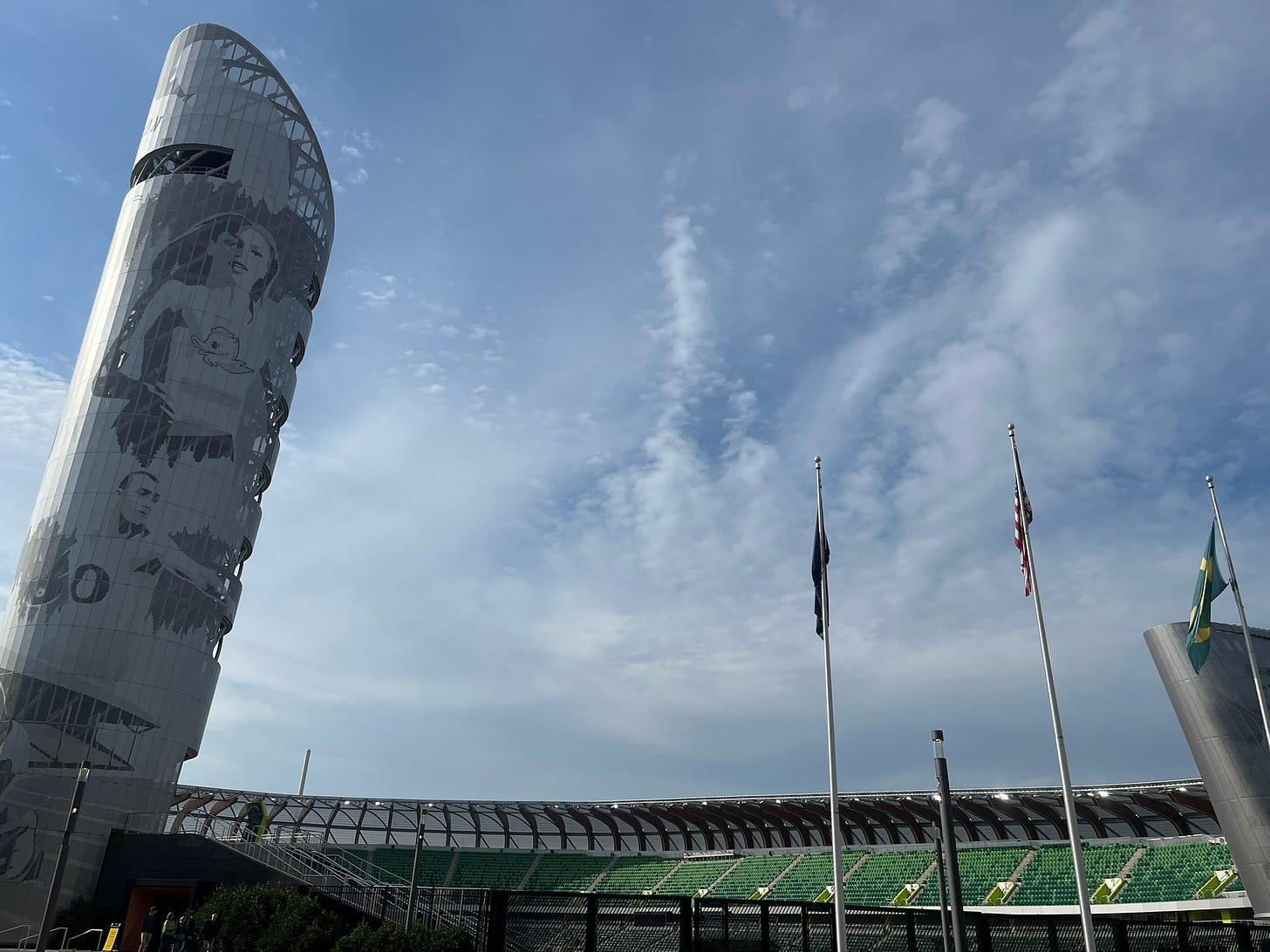The Nike, Nike Ducks
More than ever, very rich people can influence football games. Just look at the CFP field.
This week, I’m down in New Orleans to cover the Sugar Bowl, which means I might also take down an oyster or three dozen. And because this post is loosely about one of the other College Football Playoff quarterfinal games, let me lay out the schedule for you …
Tuesday: Penn State vs. Boise State (Fiesta Bowl) at 7:30 p.m. ET
Wednesday: Texas vs. Arizona State (Peach Bowl) at 1 p.m.; Ohio State vs. Oregon (Rose Bowl) at 5 p.m.; Notre Dame vs. Georgia (Sugar Bowl) at 8:45 p.m.
My Washington Post colleagues and I will have coverage of it all. Read along here, and please keep reading below.

The Nike, Nike Ducks
Over the holidays, one of my wife’s relatives wondered how the College Football Playoff field stacks up with the teams who pay players the most name, image and likeness (NIL) money. This was my moment. Finally, someone asked.
But while it was a pretty astute question, the answer, unfortunately, could only be educated guesswork. The truth is we don’t really know.
We do know Ohio State is spending about $20 million on its football roster this season (because the Buckeyes’ athletic director said as much to ESPN over the summer). After that, credible people have told me — and many others, to be clear — that Texas and Oregon are two of Ohio State’s high-spending peers. Also in the mix are Texas A&M, Georgia, Tennessee, LSU, Miami, some others. Earlier in the fall, an agent told me Louisville has a surprising amount of cash. But unlike in professional sports, where payroll figures are available on any number of websites, the third-party bankrolling of college rosters is a mostly data-less affair.
What’s clear, though, is that while money can’t guarantee success in college football, it can give you a substantially better shot at it. Ohio State, Texas, Oregon and Georgia make up half the teams that can still win a national title. Of the other four, Penn State and Notre Dame are certainly cutting massive checks; Arizona State remade its roster in the transfer portal (which requires real money); and Boise State is no doubt one of the biggest spenders in the Group of 5 conferences, helping it earn the playoff’s automatic bid for a G5 team.
It is 2024, little makes sense, but the top of college sports is governed by a very basic capitalist principle: If you’re rich enough, you can buy at least some amount of fleeting happiness.
Back in October, I traveled to Eugene for Oregon vs. Ohio State, pt. 1. On my list of reporting goals that weekend: better understand just how involved Nike founder Phil Knight is in Oregon’s NIL operation, which runs like a well-oiled machine powered by hundred dollar bills. But what I quickly realized is that people at Oregon — and more specifically, people who work for and around Oregon athletics — really, really don’t like talking about Phil Knight and his influence on the NIL machine powered by hundred dollar bills.
I get it. As I wrote in this story for the Washington Post, it would be silly for Dan Lanning, Oregon’s head coach, to miff his most important donor by publicly bragging about how flush the program is. And if you’re Lanning — or any of his assistants, or Oregon’s AD — it would feel pretty crummy to constantly have your hard-earned wins attributed to an 86-year-old billionaire. Yes, just months after athletes could start making money in 2021, Knight and other mega boosters helped build a professional (and sustainable) company to pay players for Oregon. But that’s not the *only* reason the Ducks are 13-0, the country’s last undefeated team. Lanning and his staff have coached their asses off. They also have seemingly picked the right players to pay.
It’s easy to snort when a high-level recruit says he didn’t pick a school for the money. But I think that can be true, to an extent, in that once a small handful of teams are throwing the same-sized pile of cash at you, things like culture, facilities and yeah, even academics, can start to matter a bit more. Money can’t deliver championships, or even winning seasons necessarily (hello Florida State!). It just pays the entry fee to that highest tier, where you can match Ohio State’s offer and then pitch having a better sound system in the weight room.
Wandering around Eugene, I met a husband and wife who graduated from Oregon in the aughts. We got to chatting, I bought them a round, they repaid me with their thoughts on The Knight Effect. Sure, they said, it can be annoying when it’s ALL anyone talks about if the Ducks are good. But did I see the Knight Library? Or the Knight Campus? Or the all-glass academic center for athletes that Knight and his wife, Penny, donated?
Their point: Knight’s pockets are deep enough — and then some — to make a difference at Oregon the university and Oregon the football powerhouse. If only every college could be so lucky.
“The devil works hard,” the woman said, “but Phil Knight works ten times harder.”





Nice Insight - I always learn something - many things - from your stories.
Interesting….